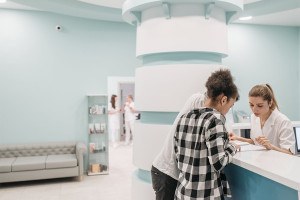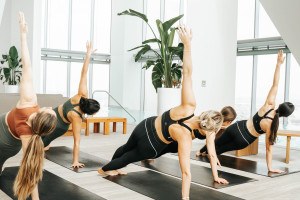Sleep Week: Your Wearable Sleep Tracker May Be Wrecking Your Sleep
“This is a case of technology outpacing the science," says Penn Sleep Center's Richard Schwab.
It’s Be Well Philly Sleep Week! All week long, we’re celebrating sleep and all the wonderful things good quality shuteye does for your body. We reached out to Philly’s top sleep experts to answer all your sleep questions in one fell swoop. Check back this week for more installments of our ultimate sleep FAQ. And to see them all in one place, pick up a copy of Philadelphia magazine’s May issue, on newsstands now.
» Also in Sleep Week: “How to Help Your Kid Become a Champion Sleeper”
My boyfriend got me a wearable sleep tracker for my birthday. Do these things actually work?
“There haven’t been studies to show these devices do what they promise,” says Richard Schwab, co-director of the Penn Sleep Center. “This is a case of technology outpacing the science.” In fact, a review of sleep trackers in the Journal of Clinical Sleep Medicine last December concluded that “lack of validation studies and FDA approval for many [consumer sleep technologies] is a concern.” The problem, says Schwab, is that most products on the market use an accelerometer to detect movement, then draw conclusions about your sleep patterns based on how much (or little) you move. These devices assume that a lack of big movement indicates sleep and that intermittent micro-movements indicate which stage of sleep you’re in. Unfortunately, there’s no data to show they do this with any sort of accuracy. In fact, Schwab and other sleep experts worry that wearable trackers may actually cause more sleep problems than they solve, if they make noise, are in your way or feel uncomfortable. Says Schwab, “The question becomes: Does the device disturb your sleep more than it’s helping it?”
Is there a best position for sleep?
Sleep position is all about personal preference. “There’s no evidence that says sleeping on your back, stomach or side is more beneficial,” says Fredric Jaffe, director at Temple’s Sleep Center at Oaks. That is, unless you’re pregnant or have back pain: Pregnant women are better off sleeping on their left sides, so the womb doesn’t rest on the vena cava, a large vein that delivers blood to the heart. And anyone on a quest to ease back pain should try side-sleeping, too; it takes some pressure off the spine.
What’s the best thing to wear to bed?
There’s no one-size-fits-all approach when it comes to apparel (or lack thereof) for sleep, but temperature is a consideration. Jaffe says the ideal temperature for sleep is between 68 and 72 degrees, depending on the person. So dress appropriately.
Are fancy beds worth the money?
“No mattress will magically help you sleep better,” says Catherine Riley, a pulmonary, critical care and sleep medicine specialist at Bryn Mawr Hospital. The exception is for people who snore; they can benefit from an adjustable bed that puts the body in a tilted position, since sleeping upright blunts gravity’s pull on the airway and makes it easier to breathe. But for the rest of us, the goal should simply be to create a sleep environment that’s quiet, comfortable and relaxing, and free from too much stimulation. If you’re used to falling asleep with the TV on—a no-no thanks to all that super-stimulating blue light — a white noise machine is a better choice; it gives your ears something to tune into without perking up your brain via your eyes.
Will doing yoga improve my sleep?
A study out of Penn’s Perelman School of Medicine examined the sleep patterns and physical activity habits of more than 400,000 adults and found that those who regularly participated in activities like biking, running, weight lifting, Pilates, yoga, golfing and even gardening were more likely to get the recommended seven hours of sleep on a regular basis than adults who didn’t.
Just don’t make it an evening power-yoga class if you’re hoping to turn in — and fall asleep — earlier. When you exercise, your body releases adrenaline, so some people need a few hours to wind down after a workout before they hit the sheets.
I put on a bit of winter weight, and I’ve noticed I don’t sleep as soundly. Could these things be related?
A recent animal study out of Penn’s Perelman School of Medicine suggests that even small changes in weight can impact sleep patterns — for better if you drop a few pounds, for worse if the number on the scale shoots up. Isaac Perron, a Penn neuroscience PhD candidate and lead author of the study, explains that when mice were switched from a healthy diet to one high in fat for just a week, they showed the same poor sleep patterns as mice who’d been fed a high-fat diet for much longer, including increased wake fragmentation (the undesirable habit of dozing off during the day).
The thing is, when mice are tired during the day, they sleep. Humans, on the other hand, try to power through, loading up on La Colombe lattes and sugary scones, which can further screw with sleep and create an ongoing cycle of poor sleep patterns. The good news is, mice who switched from a high-fat diet to a healthy one and slimmed down a bit quickly exhibited healthy sleep patterns again. So, yes, ditching your winter weight could help you snooze better.
I read on my iPad every night when I’m in bed. Is this messing with my sleep?
A 2015 study found that using blue-light-emitting devices before bed prolongs the time it takes to fall asleep, suppresses melatonin levels, reduces REM sleep and diminishes alertness the following morning.
But Eric Sztejman, a pulmonologist with Virtua Health System, thinks there could be more going on here, too: “We tend to hold these screens, especially phones, closer to our eyes than regular printed books,” he says, which could make the effects of the bright light more pronounced. There are also the behavioral effects of seeing Great-Aunt Bertha proselytizing about Donald Trump as you scroll through Facebook: You get agitated, your heart begins to race, the adrenaline surges. “All of a sudden you’re stimulated again, and you’re going to have trouble falling asleep,” Sztejman says.
Ideally, you should lay off your devices for at least an hour before bedtime. But if you simply can’t pull the plug, Sztejman recommends dimming the screen brightness or changing the background to a darker color. You can also get a screen cover that blocks the blue light. Or, if you have an iPhone, iPad or iPod touch with the just-released iOS 9.3 operating system, you can turn on Night Shift mode, a new setting that automatically changes your display to emit warmer colors in the evening.
Like what you’re reading? Stay in touch with Be Well Philly — here’s how:
- Like Be Well Philly on Facebook
- Follow Be Well Philly on Twitter
- Follow Be Well Philly on Pinterest
- Get the Be Well Philly Newsletter


